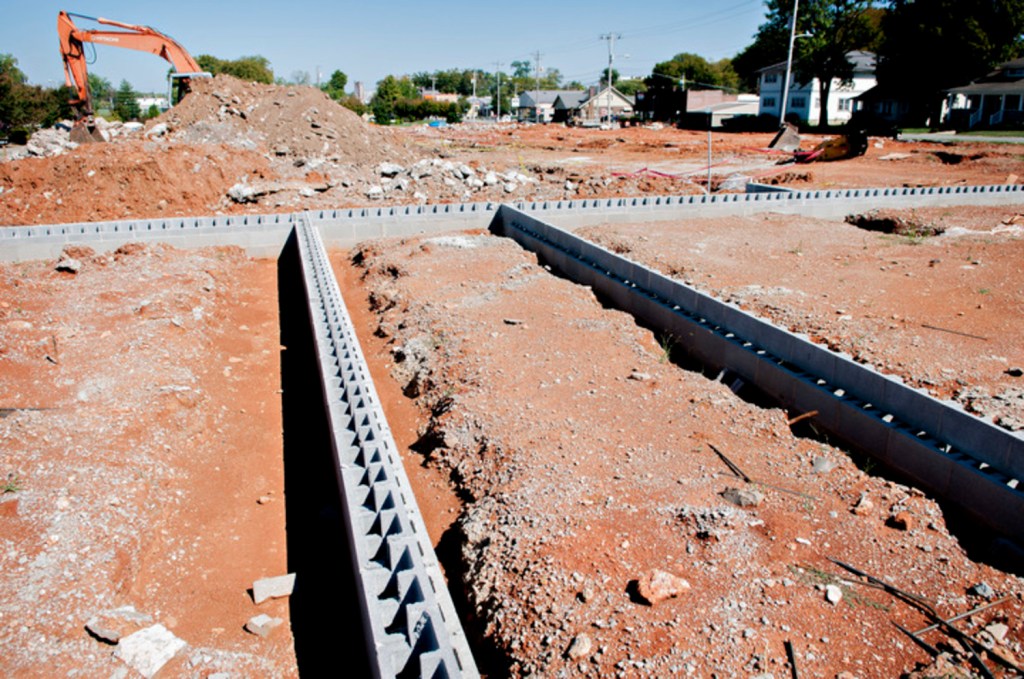Surging downtown poised for next step
Published 9:19 am Sunday, October 16, 2016

- Construction continues on The Vue, a planned $5 million downtown residential and commercial development Friday, October 7, 2016, on State Street between Seventh and Eighth avenues. The Vue will consist of three buildings, each three stories tall with restaurant space, office, gym and common areas. (Bac Totrong/photo@bgdailynews.com)
Bowling Green’s downtown is poised to enter its next phase with an unprecedented influx of hundreds of residential units. It’s the logical next step in a progression that has seen the city’s downtown grow and change significantly during the last eight years.
And while downtown Bowling Green has never undergone the mass exodus of businesses and people that have plagued numerous other cities’ downtowns, there have been challenging times.
Jonathan Jeffrey, department head for the Department of Library Special Collections and the manuscripts and folklife archives coordinator at Western Kentucky University, said there was a time in the late 1960s and 1970s when there were quite a few empty or neglected buildings as retailers left downtown and relocated in other parts of the city.
“That left a lot of real estate downtown,” Jeffrey said.
“Across America, there was a flight from downtowns” during that period, said Doug Gorman, owner of downtown business Booth Fire & Safety and chairman of the Warren County Downtown Economic Development Authority. “You started seeing downtowns losing their importance. A city’s downtown is the heartbeat of the community.”
Greenwood Mall opened in 1979 on Scottsville Road, luring even more development away from the central business district.
Gorman came to Bowling Green to attend WKU two years later.
“Sears was still downtown … there were things going on,” he said.
But retail establishments continued leaving the area around Fountain Square Park.
“People were more enamored by freshness and newness,” Bowling Green Mayor Bruce Wilkerson said.
One of the things that kept the downtown from fully deteriorating in that era was the celebration of America’s bicentennial in 1976. During that time, “there was a push to renovate and preserve historic structures” across the nation, backed by federal grant programs, Jeffrey said. “There was a wave of restoring old buildings. We were right on the cusp of that movement (and) very fortunate people were interested” in pursuing such projects, he said.
And because of the general strength of the local economy, which kept small retailers and offices open, “we still had a lot of people downtown. That’s really, really important,” he said.
While the downtown remained vibrant during business hours, nights and weekends were a different story.
“In the evenings, there wasn’t anything” happening downtown, Jeffrey said.
Tom Holmes, owner of 440 Main and Micki’s on Main, opened his Fountain Square restaurant in 1992. There were only one or two other eateries downtown in those days, and while “The Capitol (theater) was the beacon, that was it. It was amazing how many people didn’t even know we had a downtown.”
A dramatic change to the downtown landscape, however, began in 2008 when the WKU Gateway to Downtown Bowling Green Tax Increment Financing District was formed. It has led to an unprecedented growth spurt for downtown Bowling Green.
In state-approved TIF districts, a portion of the increased tax revenue from the development in a district is returned locally. The state has returned more than $8 million to local entities since the local TIF was formally started.
The local TIF district is the largest in the state, encompassing more than 300 acres from WKU to The Medical Center’s campus. So far, the local TIF district has seen investments of more than $287 million by various entities, including more than $100 million in private investment.
Among those TIF district projects are several that have made downtown Bowling Green a night and weekend destination. Most notably was the opening of Bowling Green Ballpark, home of the minor league Bowling Green Hot Rods, in 2008, and the Southern Kentucky Performing Arts Center in 2012.
Since their openings, the venues have attracted more than 2 million visitors to downtown Bowling Green. Eric Leach, Hot Rods general manager, said game attendance has topped the 1.7 million mark, a figure that doesn’t include concerts and other community events held at the ballpark. From opening night in March 2012 to Sept. 30 of this year, SKyPAC has welcomed 279,217 patrons, according to SKyPAC Executive Director Rick McCue.
The ballpark, SKyPAC and other developments have “created the vibrancy (and) has attracted people who now want to live in the downtown area,” Wilkerson said. “There’s a method to development.”
“The TIF is doing exactly what it’s supposed to do,” Gorman said.
While Fountain Square has long had some higher-end specialty stores, “there was not a lot of variety,” Holmes said, and thus there was a limited group of people who ventured downtown.
“When the ballpark came in, you brought a completely different genre of people coming in. That’s where I have seen the biggest difference,” he said.
Urban planners often talk about thriving areas being ones where people can “live, work and play,” all within walking distance.
With work and play largely taken care of, the next phase for downtown Bowling Green is “live.”
“The demand for downtown living is huge; it’s exploded,” Holmes said.
As a result, an unprecedented level of residential development is now planned for the city’s downtown.
The Vue is a multimillion-dollar residential and retail project facing State Street between Seventh and Eighth avenues. New Millennium Real Estate LLC is building The Vue, which is scheduled to include more than 50 residential units. The Vue developers are also planning a mixed-use project, including residential units, across the street at the former location of the Ellis Place bar.
Closer to the WKU campus, Midtown Brookside’s apartments phase two is underway on Center Street. The first phase opened in August of last year. Once complete, the entire development will include 173 rental units.
At Stadium Park Plaza between Bowling Green Ballpark and SKyPAC, developer Jerry Katzoff is considering building condominiums on the unfinished sides of the wrap around the downtown parking garage. Another apartment development, the details of which are still being formulated, is planned for the downtown area, Gorman said.
“That’s what we are excited about,” he said. “Some downtowns have failed to capitalize (on growth). Monday through Friday are full, but empty on weekends and nights.”
The definition of “downtown” is also now expanding to include the entire area from the WKU campus to the Barren River, with Fountain Square remaining the hub.
“Fountain Square is obviously an important part of downtown; it’s the focal point,” Gorman said. The surrounding growth will help Fountain Square thrive, Gorman said – “all boats rise with the tide.”
Jeffrey agreed that the surrounding growth will help small businesses continue to prosper in Fountain Square.
But Fountain Square does have “a challenge,” Holmes said. Because it is not part of the TIF district, businesses on the square are not eligible for the tax rebates that businesses in the TIF district are eligible for. “We are at a disadvantage,” he said of Fountain Square landlords and business owners. “The thing we can offer is the uniqueness of the square.”
But as the entire downtown grows, “the more entertainment, shops, restaurants, nightclubs,” will open, Holmes said. “It becomes perpetual.”
Two Fountain Square landmarks are also poised for facelifts.
The city of Bowling Green is in the early stages of planning a renovation of the namesake Fountain Square Park, including structural work on and painting of the iconic fountain, walkway renovations and other improvements, according to city Parks and Recreation Department Director Brent Belcher.
And the Capitol Arts Center has long been plagued by a leaky roof, but earlier this month, Warren County Fiscal Court accepted an $87,000 bid to replace the roof next month.
“We’re real excited about that,” Holmes said. “Once the roof is fixed up, the sky is the limit.”
But the residential growth will spur another need: “We are going to need a full-service grocery store” to serve the growing downtown population, Jeffrey said.
That need was also mentioned by Gorman and Wilkerson.
“That kind of thing (a grocery store) will follow once you see the residential increase,” Wilkerson said. “The larger number of (downtown) households will continue to build on itself.”
People living downtown “will want certain amenities,” Gorman agreed, including a place to purchase groceries.
“We have been having meetings to develop that concept,” he said.
While a downtown grocery store is still only a possibility, Wilkerson said he foresees the area from WKU to The Medical Center as a vibrant, fully developed downtown “in the next 30 to 50 years.”
“That’s the exciting part,” he said. “To see what could happen.”
— Follow city government reporter Wes Swietek on Twitter @BGDNgovtbeat or visit bgdailynews.com.





